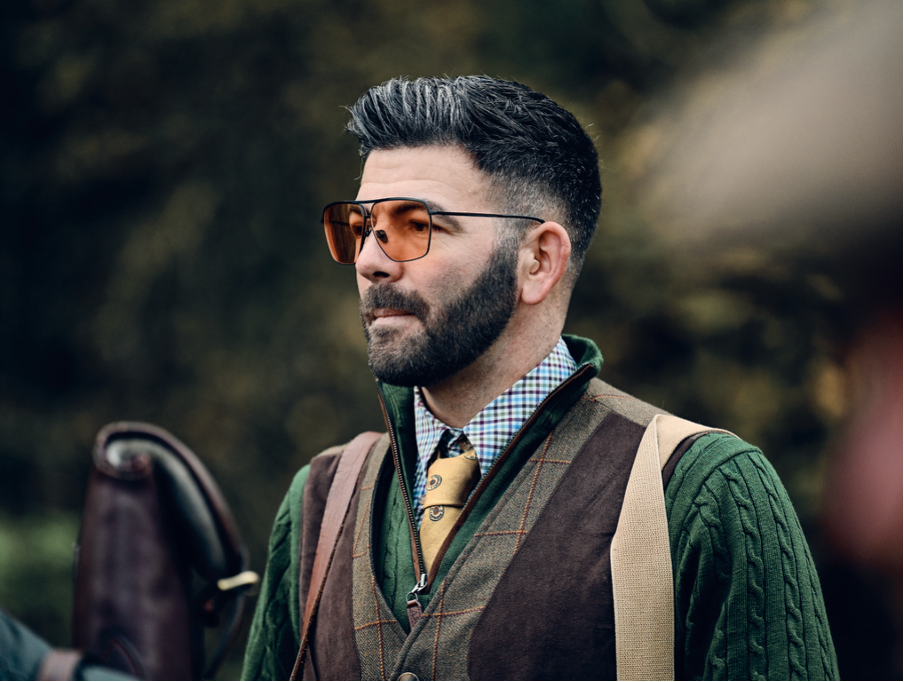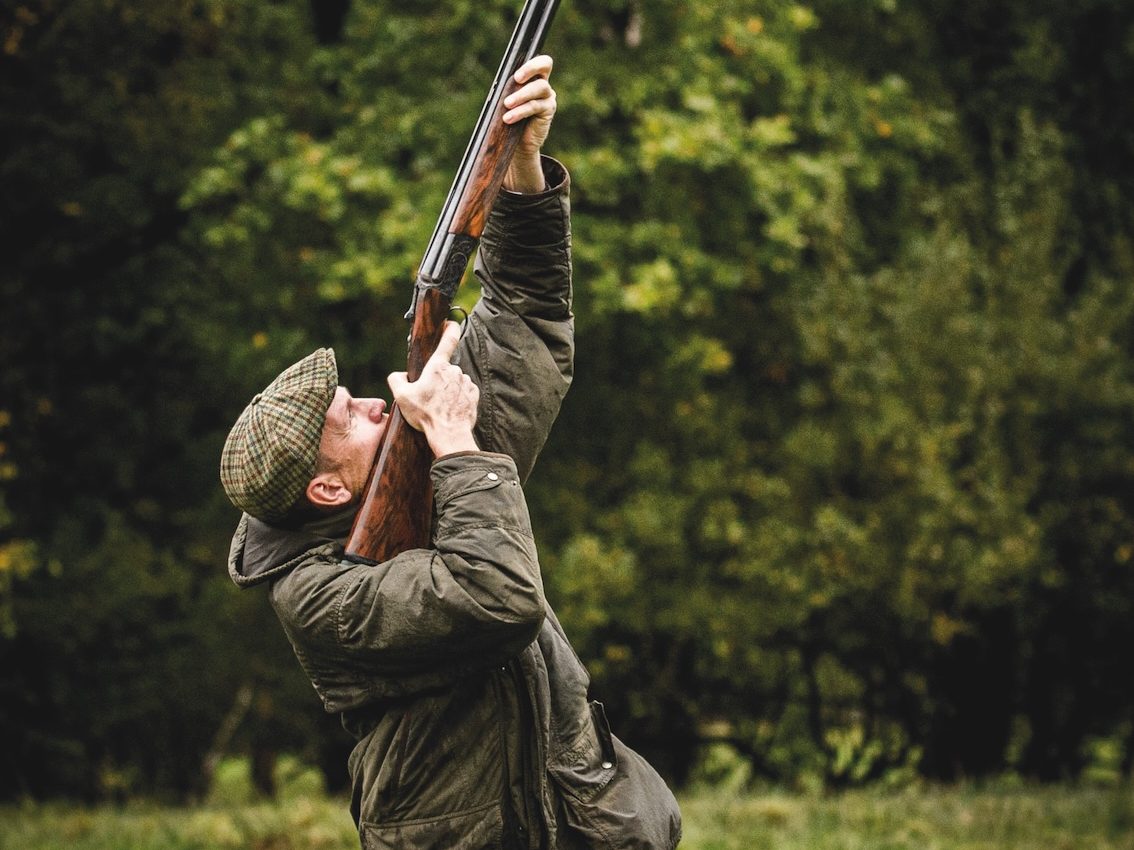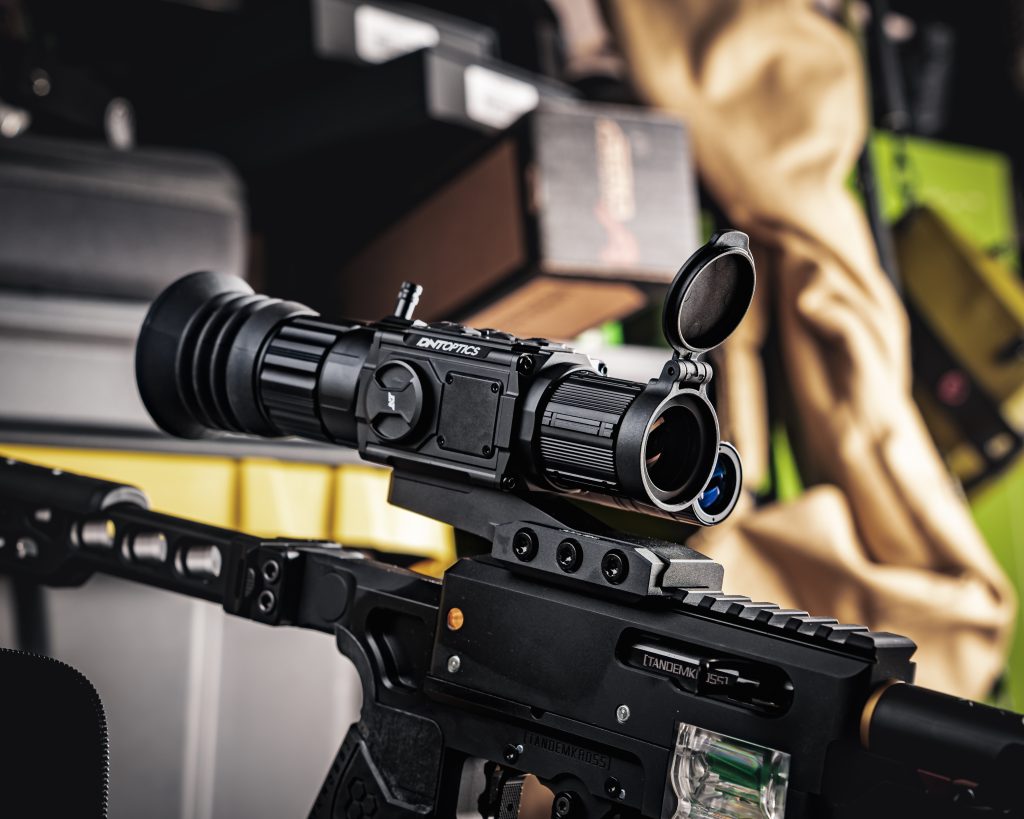Win CENS ProFlex DX5 earplugs worth £1,149 – enter here
Sporting glasses hit a purple patch
Experts in innovative eyewear tell Felix Petit about the science behind the new designs that give shooters a safer and clearer sight of their target

Glasses to protect the human eye from debris or the dazzling rays of the sun have been around since antiquity. Ptolemy was extremely particular about his Ray-Bans, Genghis Khan loved a pair of wraparound Oakleys, and Emperor Marcus Aurelius was inseparable from his favourite pair of Pit Vipers. Not quite. However, the Inuit have been donning snow goggles with narrow apertures fashioned from walrus ivory since the 13th century, and the Chinese have been sporting glasses with lenses of polished smoky quartz since even earlier.
Shooting glasses are now an essential bit of sporting kit and have even become stylistically relevant in the mainstream media. South Korean pistol shooter Kim Yeji illustrated this perfectly when her icy demeanour and epic technical eyewear turned her into an overnight sensation at the Paris Olympics where she was dubbed the “coolest athlete” at the Games.
The story of the modern evolution of shooting glasses broadly begins in the 19th century and closely reflects contemporary advances in material technology, and developing attitudes towards personal safety.
Early protective glasses for shooting shielded the eyes from the gunpowder flash and any flying detritus. Protective eyewear usually took the form of rudimentary leather goggles with flat panes of shaded glass for lenses. Although they provided basic impact protection, they were still prone to shattering. However, around the beginning of the 20th century, basic wraparound glasses began to appear, although it wasn’t until the 1920s that a shatterproof alternative to glass lenses was devised.
Cellulose nitrate, one of the first plastics to be produced, became widely used for the frames and lenses of shooting glasses during the interwar period. This material was far more impact resistant than glass but was highly flammable and degraded over time. It was soon replaced by cellulose acetate, which offered similar impact resistance but was less of a fire hazard.
Material science continued to advance and in the 1970s polycarbonate lenses were introduced and quickly adopted for shooting glasses. Polycarbonate was not only able to withstand high-velocity impact but, due to progressions in injection-moulding technology, polycarbonate lenses were also able to minimise or eliminate prismatic distortions to provide ever clearer sight pictures for shooters. Further scientific breakthroughs have yielded exotic lens materials such as Trivex, which has greater clarity and impact resistance. Lens-coating compounds have also developed to provide anti-fog, UV and scratch-protective qualities.
Added bonus
Edward Lyons, director of Edwards Eyewear and Flint Optometry, tells Shooting Times: “We want shooting glasses to fulfil three main criteria: to protect the user from impact; to protect the user from UV; and to enhance the contrast of the target against the background – and if they look good it’s an added bonus.”
Ed designed the Hiroki II shooting glasses’ frames based on feedback from shooters and his business partner and former FITASC world champion Ed Solomons. He aimed to create something lightweight and comfortable with all of the optical characteristics of the household-name brands, but also with a more contemporary aesthetic.
The Hiroki frames are constructed by hand in Japan from pure Titanium and weigh only 15g. Ed stresses the importance of the fit of shooting glasses, as frames that are too tight or that suffer from any slippage are likely to affect your ability to see the target. For optimal target acquisition, shooters want glasses that give a chameleon-like field of view, meaning the chunky frames loved by French rugby coach Fabien Galthié are a non-starter.
Ed says: “When the gun is mounted, we want an uninterrupted sight picture so slim or no frames are best. There are plenty of entry-level glasses made from polycarbonate, which offer great protection characteristics at a gentle price point. However, the V value – a measure of optical clarity – is low. The higher-quality glasses produced by ourselves and Pilla use a derivative of Trivex or Polyamide which gives crystal-clear vision and zero distortion, with great impact resistance too.
“Lens quality is paramount, and you do get what you pay for,” he adds.
Simon Goldsmith, director of JH Steward (Bisley), the shooting glasses expert, says that on a fundamental level, shooters investing in glasses should look for shatterproof lenses with a tint that helps the wearer pick out the colour of the clays under various lighting conditions.
Simon says: “This is especially relevant for prescription wearers.”
Again, he emphasises the importance of fit and recommends “high-fitting glasses with a height-adjustable bridge to enable viewing without the frame restricting field of view to give optimum vision”.
He is adamant about large lenses to further reduce visual restriction and highlights that there are numerous frames on the market which offer prescription inserts. Simon says during his time in the industry there have been terrific advances such as the use of silicone curl sides for glass arms to aid comfort and assist in a secure fit. Anti-reflection coatings have also come on leaps and bounds.
Starkey Outdoors is one of the premier UK stockists of Italian-made Pilla shooting glasses, the very same brand used by Olympic Skeet silver medallist Amber Rutter. Director Tom Starkey says when selecting a pair of shooting glasses, first of all you should look for comfort and lens quality. He explains that Pilla offers several sizes and types of arms to ensure there is a model to suit everyone. Pilla’s recent introduction of the X7 Razor range has also given Guns a model that looks more like a pair of sunglasses, with the advantage of lenses made by optical expert Carl Zeiss Vision.
Lens colour
Tom also suggests that it is worth considering lens colour based on your expected environment, background, light conditions and activity; that is game, clays and discipline. He says: “A typical kit for game consists of dark-brown lenses for low winter sun, a medium orange for an all-rounder to enhance the target and manage the light, and lastly a yellow lens to increase the light on a dull day.”
He says that lens choice for clays will be similar, but it is worth adding a purple lens to neutralise green backgrounds.
Tom praises the continuing advancement of shooting eyewear, highlighting the new Pilla Vista X, which offers 24mm of additional peripheral filtered lens. He says this increases the eyes’ ability to relax as a result of the lack of unfiltered light reaching the retina, thus speeding sight picture acquisition.
Denzil Lee, director of Evolution Eyewear, comments: “A common misconception among shooters is that you need to wear polarised lenses. Light is referred to as polarised when it reflects off a surface like snow, roads or water. A polarised lens will filter this type of light and eliminate the glare it causes. That’s why they are the popular choice for activities such as sailing, boating, skiing and fishing.”
Given that while shooting, you are mostly looking up at the sky, polarised glasses are not always needed. Denzil also warns that most inexpensive polarised glasses are made from TAC (Tri-Acetate Cellulose) which are typically 1.2mm thick and won’t provide the full impact protection of a pair of purpose-built shooting glasses.
Denzil has seen eyewear move on significantly even since he entered the industry in 2007. He says the advent of TR90, a type of rugged nylon, has allowed frames to be made stronger and lighter, and the available colours for lenses have expanded massively.
He explains that 20 years ago no one was using purple, but the industry has realised the benefits of the colour. He says that purple lenses are now one of the most popular colours as they are highly effective as a background neutraliser, dulling or “killing” green or brown backdrops.
This quality enables the shooter to see a black, orange or pink clay better against a dark background. He adds that purple also provides a soothing tone, ideal for extended wear becauseit reduces eye fatigue.
Laura Goode, a marketing manager with Optilabs, says it chiefly focuses on selling glasses to those in need of prescription lenses. Optilabs offers an exotic array of bifocal and varifocals, and ultra-dynamic photochromatic lenses, which react seamlessly to changing lighting conditions. Its Edge and Cirrus models have wraparound frames, and the Edge has an adjustable nose bridge, which is very useful for shifting between shooting disciplines.
Compulsory
With the protection and utility that cutting-edge shooting glasses offer any Guns serious about their shooting, not to mention that for any Clay Pigeon Shooting Association shoot or competition, glasses are now compulsory. Glasses such as the Komodo Pros offer extraordinary adaptability and can reduce glare using their photovoltaic chip in the blink of an eye. Top-end glasses made of clever polymers can also stop a 28g load at 20 yards with no signs of penetration, providing considerable peace of mind.
Even if your eyesight isn’t perfect, there are many excellent manufacturers of prescription glasses. I’ve missed many a pheasant squinting into the low sun and failed to bring down woodcock as they jink through the woods.
I won’t wait for the next miss to invest in shooting glasses.
Related Articles
Get the latest news delivered direct to your door
Subscribe to Shooting Times & Country
Discover the ultimate companion for field sports enthusiasts with Shooting Times & Country Magazine, the UK’s leading weekly publication that has been at the forefront of shooting culture since 1882. Subscribers gain access to expert tips, comprehensive gear reviews, seasonal advice and a vibrant community of like-minded shooters.
Save on shop price when you subscribe with weekly issues featuring in-depth articles on gundog training, exclusive member offers and access to the digital back issue library. A Shooting Times & Country subscription is more than a magazine, don’t just read about the countryside; immerse yourself in its most authoritative and engaging publication.







